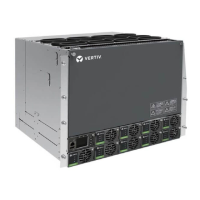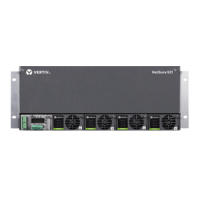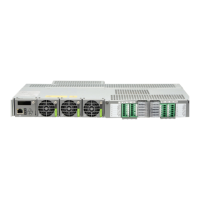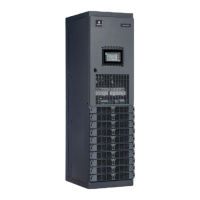Vertiv™ NetSure™ 7100 Series -48 VDC Power System User Manual
5 Troubleshooting and Repair
5.1 Contact Information
Refer to Section 4154 (provided with your customer documentation) for support contact information.
5.2 Controller, Rectifiers, and Converters
For troubleshooting and repair instructions on these units, refer to the following documents.
• NCU Controller Instructions (UM1M830BNA)
• Rectifier Instructions (UM1R483500e or UM1R482000e3 or UM1R483500e3)
• -48 VDC to +24 VDC Converter Instructions (UM1C48241500)
• -48 VDC to -58 VDC Converter Instructions (UM1C48582000P3)
5.3 Controller Configuration
If any controller configuration settings were changed, refer to the NCU Instructions (UM1M830BNA) and save a copy of the
configuration file. This file can be used to restore the controller settings, if required, at a later date.
• Note that provided on a USB drive furnished with the system is a controller configuration drawing (C-drawing) and the
controller configuration files loaded into the controller as shipped.
5.4 System Troubleshooting Information
This system is designed for ease in troubleshooting and repair. The various indicators as described in “Local Controls and Indicators”
on page 5 and in the Controller and Rectifier Instructions are designed to isolate failure to a specific element. Once the faulty element
has been identified, refer to “Replacement Information” on page 45 and “Replacement Procedures” on page 46.
Troubleshooting Alarm Conditions on the Controller
The controller displays alarm conditions as listed in the “Available Alarms” or “Resolving Alarms” section of the controller’s User
Manual. Programmable external alarm relays are also available. Refer to the System Installation Instructions (IM582127000) and the
configuration drawing (C-drawing) supplied with your power system documentation for your alarm relay configurations.
The controller’s
Active Alarm
and
Alarm History
submenus allow the User to view alarm details. Refer to the NCU Instructions
(UM1M830BNA) to access these menus.
Checking the Controller’s Current Limit Point after Adding or Removing a Rectifier Module or Converter
Module
If a rectifier module or converter module is added to the power system, the system current limit point will automatically increase by
the percentage each existing rectifier or converter was set to provide prior to the addition.
If a rectifier module or converter module is removed from the system (and the Rect Comm Fail or Conv Comm Fail alarm is reset), the
current limit point will remain unchanged unless the capacity of the remaining rectifiers or converters is not sufficient to maintain the
present current limit point. If that happens, the current limit point will automatically increase to the maximum (121% of the remaining
rectifiers or converters).
It is recommended that the current limit point be checked whenever a rectifier module or converter module is added to or removed
from the power system.
When setting total rectifier or total converter current limit, the set point to each unit is the total set point divided by the number of
units. For example, if the system contains five rectifiers and the current limit is set to 150 amps then each rectifier has a current limit
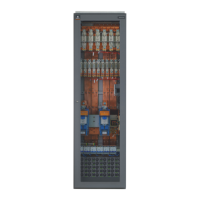
